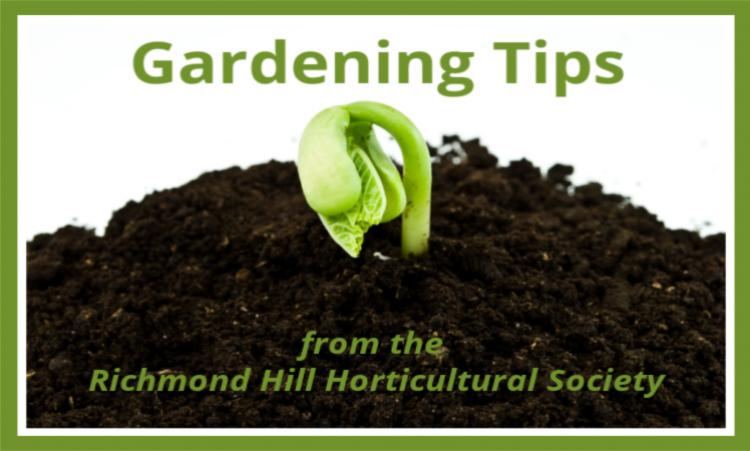Article by Doreen Coyne, a member of the Richmond Hill Garden & Horticultural Society.
Protect Tomatoes: As evenings become cooler, tender plants like tomatoes may need protective covers to buy them more time to mature.
Water according to need. It’s common for August to be a dry month. Be sure to keep an eye on your plants. When you don’t get enough rain, be sure to supplement by watering your plants deeply once per week.
Strawberries
Step 1 - Thin Out Strawberries: Strawberries will reproduce quickly. Sometimes the beds of berries can become overcrowded. If your berries have stopped producing, then it is time to prune the runners. Pruning will help them to look better and stay healthy. This will thin out the strawberries; but, you may also wish to remove certain plants and toss them into the compost, or transplant the overcrowded strawberries into a second bed or give the plants to a friend or neighbour so that they too can have fresh berries next year. BTW: The removal of old canes is something you should also do with raspberries as the weather cools.
Step 2 - Weed and Mulch: It is also time to take care of your strawberry beds. Be sure to remove any weeds which may have moved into the beds. Once all the weeds have been removed, cover the strawberry plants with a thick layer of mulch. Mulch will insulate the plants and protect the soil during the winter.
Save Seeds: A lot of your veggies are ready to harvest this month. So it is time to begin collecting tomato, pepper, and zucchini seeds for next year’s planting. By saving seeds, you not only get the desired varieties and plants you want, but you also save money. Simple remove the seeds when you harvest these plants and place them on paper towel to dry out. Once dry, put each variety and type of seed into small plastic or paper bags labelled with plant type, variety, colour or fruit/veggie, and date harvested.
Remove Dead Crops: As the seasons prepare to change, the summer garden will inevitably end. The plants will begin to die off and stop yielding any produce. Now is the time to pull up the dead annual plants and plant a cover crop such as oats, barley, wheat, and rye. The cover crop will help protect your soil from the harsh elements of winter. In the spring you will have to rototill those cover crops into the ground to add their nutrients to the soil. Alternatively, you may wish to cover your beds with straw for the winter. For perennial flowers, you should consider waiting another month before cutting off the dead foliage.
Bonus – Plant Some More Vegetables in August: Leafy greens such as lettuce, spinach, collards, kale, mustard, as well as radishes, turnips, beets, and carrots can all be started from seeds in August and still be harvested this year. Indeed, some of these will still thrive through the first frost or light snow!
Article by Doreen Coyne, a member of the Richmond Hill Garden & Horticultural Society.









